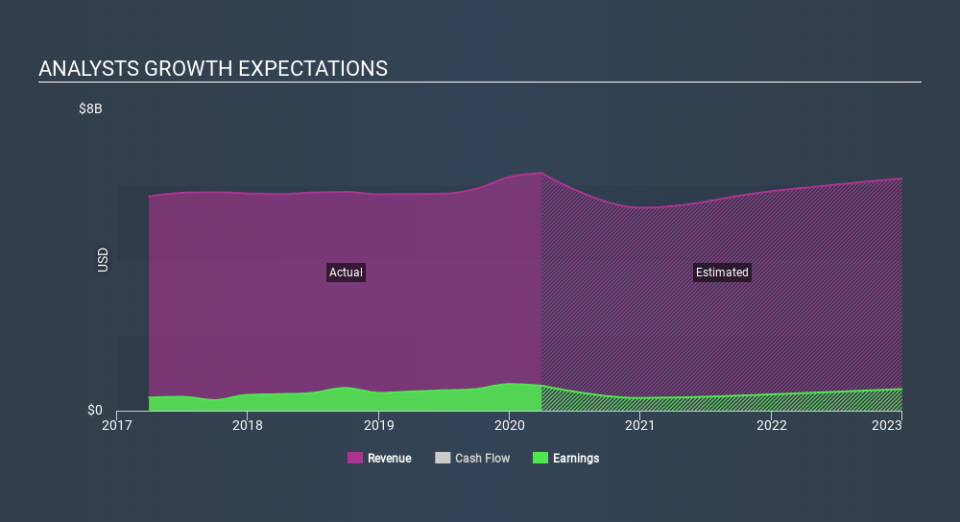First American Financial Corporation Just Missed Earnings And Its EPS Looked Sad - But Analysts Have Updated Their Models

First American Financial Corporation (NYSE:FAF) missed earnings with its latest first-quarter results, disappointing overly-optimistic forecasters. Results showed a clear earnings miss, with US$1.4b revenue coming in 4.4% lower than what the analystsexpected. Statutory earnings per share (EPS) of US$0.55 missed the mark badly, arriving some 57% below what was expected. Earnings are an important time for investors, as they can track a company's performance, look at what the analysts are forecasting for next year, and see if there's been a change in sentiment towards the company. So we collected the latest post-earnings statutory consensus estimates to see what could be in store for next year.
Check out our latest analysis for First American Financial
Taking into account the latest results, the current consensus, from the five analysts covering First American Financial, is for revenues of US$5.39b in 2020, which would reflect a definite 15% reduction in First American Financial's sales over the past 12 months. Statutory earnings per share are expected to dive 50% to US$2.94 in the same period. Before this earnings report, the analysts had been forecasting revenues of US$6.09b and earnings per share (EPS) of US$4.65 in 2020. It looks like sentiment has declined substantially in the aftermath of these results, with a real cut to revenue estimates and a pretty serious reduction to earnings per share numbers as well.
It'll come as no surprise then, to learn thatthe analysts have cut their price target 18% to US$53.43. That's not the only conclusion we can draw from this data however, as some investors also like to consider the spread in estimates when evaluating analyst price targets. The most optimistic First American Financial analyst has a price target of US$59.00 per share, while the most pessimistic values it at US$48.00. Even so, with a relatively close grouping of analyst estimates, it looks to us as though the analysts are quite confident in their valuations, suggesting that First American Financial is an easy business to forecast or that the the analysts are all using similar assumptions.
Looking at the bigger picture now, one of the ways we can make sense of these forecasts is to see how they measure up against both past performance and industry growth estimates. These estimates imply that sales are expected to slow, with a forecast revenue decline of 15%, a significant reduction from annual growth of 4.1% over the last five years. Compare this with our data, which suggests that other companies in the same industry are, in aggregate, expected to see their revenue grow 1.2% next year. So although its revenues are forecast to shrink, this cloud does not come with a silver lining - First American Financial is expected to lag the wider industry.
The Bottom Line
The biggest concern is that the analysts reduced their earnings per share estimates, suggesting business headwinds could lay ahead for First American Financial. On the negative side, they also downgraded their revenue estimates, and forecasts imply revenues will perform worse than the wider industry. The consensus price target fell measurably, with the analysts seemingly not reassured by the latest results, leading to a lower estimate of First American Financial's future valuation.
Following on from that line of thought, we think that the long-term prospects of the business are much more relevant than next year's earnings. At Simply Wall St, we have a full range of analyst estimates for First American Financial going out to 2022, and you can see them free on our platform here..
You still need to take note of risks, for example - First American Financial has 2 warning signs (and 1 which is significant) we think you should know about.
If you spot an error that warrants correction, please contact the editor at editorial-team@simplywallst.com. This article by Simply Wall St is general in nature. It does not constitute a recommendation to buy or sell any stock, and does not take account of your objectives, or your financial situation. Simply Wall St has no position in the stocks mentioned.
We aim to bring you long-term focused research analysis driven by fundamental data. Note that our analysis may not factor in the latest price-sensitive company announcements or qualitative material. Thank you for reading.

